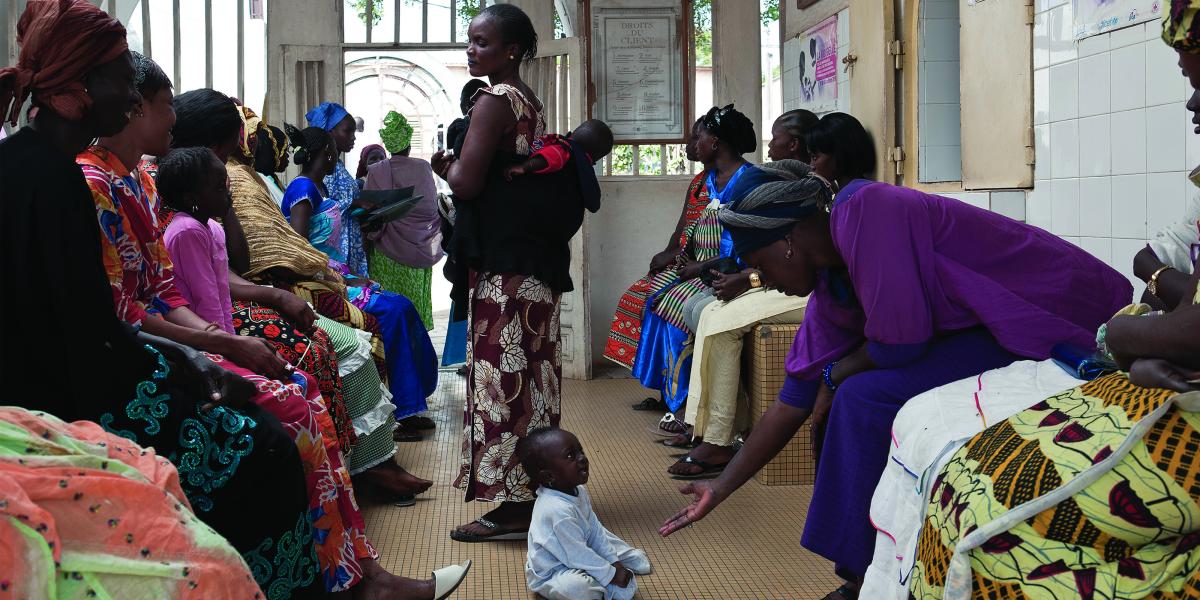Better Access, Better Lives
Sub-Saharan Africa is saddled with stubbornly high rates of infant and maternal mortality, widespread poverty and a population expected to balloon from 1 billion to as high as 3.5 billion by the end of this century, further stressing an already resource-poor continent.
A common link for all of these problems? Insufficient access to family planning services.
In much of the world, two-thirds of married women report using contraceptives, while only one in five African women do. Their cost, disapproval of their use and superstitions about side effects have all slowed their adoption there.
But positive signs in recent years suggest that this may be changing, says Amy Tsui, PhD, MA, a professor of Population, Family and Reproductive Health (PFRH) and director of the Bill and Melinda Gates Institute for Population and Reproductive Health. In the past, only a handful of African governments were willing to commit budgetary funds to purchase contraceptive commodities, but more are now doing so. Utilization is rising rapidly in some countries, and across the continent there is increasing interest in the issue, she says.
The International Conference on Family Planning in Kampala, Uganda, in 2009—the largest conference on the topic in 15 years—attracted more than 1,200 (far more than the 350 expected). A second conference in November 2011 in Dakar, Senegal, drew more than 2,200 people. Tsui, who helped organize both events, was thrilled by the interest. “Sub-Saharan Africa has been without for so long, so it’s a very gratifying development,” she says.
Jotham Musinguzi, Africa region director for the intergovernmental organization Partners in Population and Development, says there was important symbolism in holding the conference in West Africa, an area that even relative to other parts of the continent has been slow to improve access to family planning. “This is the first time the whole world was focused on this region of greatest need, and to me that was very important, ” he says. “And the message was very clear: The countries themselves are aware that they are not doing so well, but the international community showed that they were willing to be supportive and to try to sort it out.”
Several East African countries have made dramatic progress increasing access and use of family planning services, among them Rwanda, Malawi and Ethiopia, where the contraceptive prevalence has more than tripled in just 10 years.
In comparison, Musinguzi’s native Uganda has persistently lagged behind in recent decades, with one of the highest population growth rates in the world and no leadership on the issue from pro-natalist President Museveni.
“We really tried to work with him to make strong statements in support of family planning,” says Musinguzi, while acknowledging that if the president has remained aloof on the issue, neither has he openly opposed it. Notably, Uganda’s First Lady has begun advocating for improved family planning services as a means to reduce maternal mortality.
Efforts over the last five years—picking up particularly since the 2009 conference in Kampala—have begun to bear fruit. Duff Gillespie, PhD, a PFRH professor, leads the Advance Family Planning (AFP) project, which works in several countries to regularize funding for family planning and strengthen local policymakers’ commitment to the issue. In Uganda, the project has helped secure new funding for contraceptives from the World Bank, the Global Fund and the government of Uganda itself. Martin Ninsiima, a program manager at the Johns Hopkins Center for Communication Programs who works with AFP, says the 2011 Ugandan Demographic and Health Survey shows a significant increase in the use of contraceptives since 2006, from 18 percent to nearly 25 percent.
Says Musinguzi, “I think it really vindicates that our efforts have worked.”
